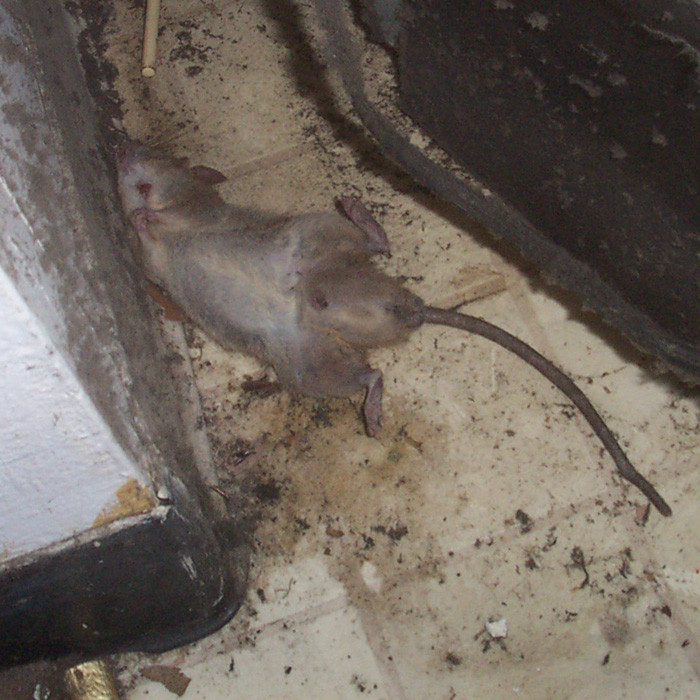- USA Wildlife Removal Education Guide and Resources
Dead rat - Disease Risks, How to Remove the Smell

How To Find And Remove A Dead Rat - A dead rat can be a real health hazard, and in order to ensure that the risk is minimized in terms of the problems it can cause, it is important to find and remove the carcass as soon as possible. This can sometimes come as a result of using poison to deal with a rat problem, which isn't the best way to solve the issue, while in other situations the rat may have died of other causes, and the first time you become aware of the issue is when you smell it. Either way, make sure you take the right precaution so that this doesn't become a health hazard for you, and you can remove the carcass safely by following this approach.
Equipment And Precautions For The Work
Rats have a reputation for carrying a variety of different diseases, and even after death it is possible to catch something from the carcass, with some diseases that become airborne transmitted from the rat's feces, and other diseases transmitted through skin contact. This is why it is important that you avoid any direct contact, and wear long sleeved clothing and gloves to prevent this. It is also important that you wear a breathing mask and goggles, while you will also need a sealed container or two trash bags to place the carcass in, while an extendable grab stick can be useful if the carcass is found in a wall cavity.
Signs There Are Rat Carcasses In And Around Your Home
After a short while, the decaying carcass does start to give off a very strong smell, and while the human nose isn't as strong as that of many animals, it will often become clear that there is a carcass in an attic or wall cavity. Another sign that there may be a carcass is that other animals may also have been drawn to the property by the smell, and these can often be spotted earlier than the scent can be smelled.
Identifying Possible Locations For The Carcass
The first thing is that if you believe that there is a rat carcass because of the smell, identifying the location where the smell is strongest will give you an idea of where to start looking. Most rat carcasses will not be in the rooms of the property, but rather they are more commonly found in the attic or loft cavity, wall cavities or in the basement, anywhere that there is less human activity. Once you have started looking, your nose will often be a good guide as to where the carcass might be, as the smell will continue to get stronger the closer you get.
Removing A Rat Carcass Within A Wall Cavity
This can be quite challenging, as it can be difficult to get into the cavity, and in some cases you may not be able to get direct access to the cavity in order to remove the carcass. Before you look at cutting open the wall, it may be worth checking in the attic to see if you can confirm the location of the carcass in the wall, and in some cases you may be able to use a grab stick to pick up the carcass in that way. If this isn't possible, you will need to cut a small hole in the drywall, as close as possible to where you can identify the smell, and once you have removed the carcass you will then have to repair the wall.
Finding And Removing Rat Carcasses In The Attic
If the rat has died in your attic, you will often see the signs of the animal's presence and smell the carcass, but finding it can sometimes be a little tougher. As rats tend to go to somewhere they feel safe when they are in pain, they will often be in the nest or in one of the dark corners beneath where the roof joins the top of the walls. Because of the confined space, make sure you wear your breathing mask here, as there will often be spores in the air that can cause diseases, and it is easy to disturb these from the feces in the attic.
Disposing Of The Carcass
Once you have found the dead rat, place the carcass into the container or the garbage sacks, and if you are using a garbage sack it is best to double bag the carcass to make sure it cannot attract other pest animals because of the smell. This can then either be placed out with the garbage or incinerated. Some people do prefer to bury the carcass, but the problem with this is that the container or garbage sacks will often not be biodegradable, while burying the carcass unsealed will also draw pest animals.
Go back to the main Rat Removal page for more information about removal of dead rat in a house, such as the wall or attic.

